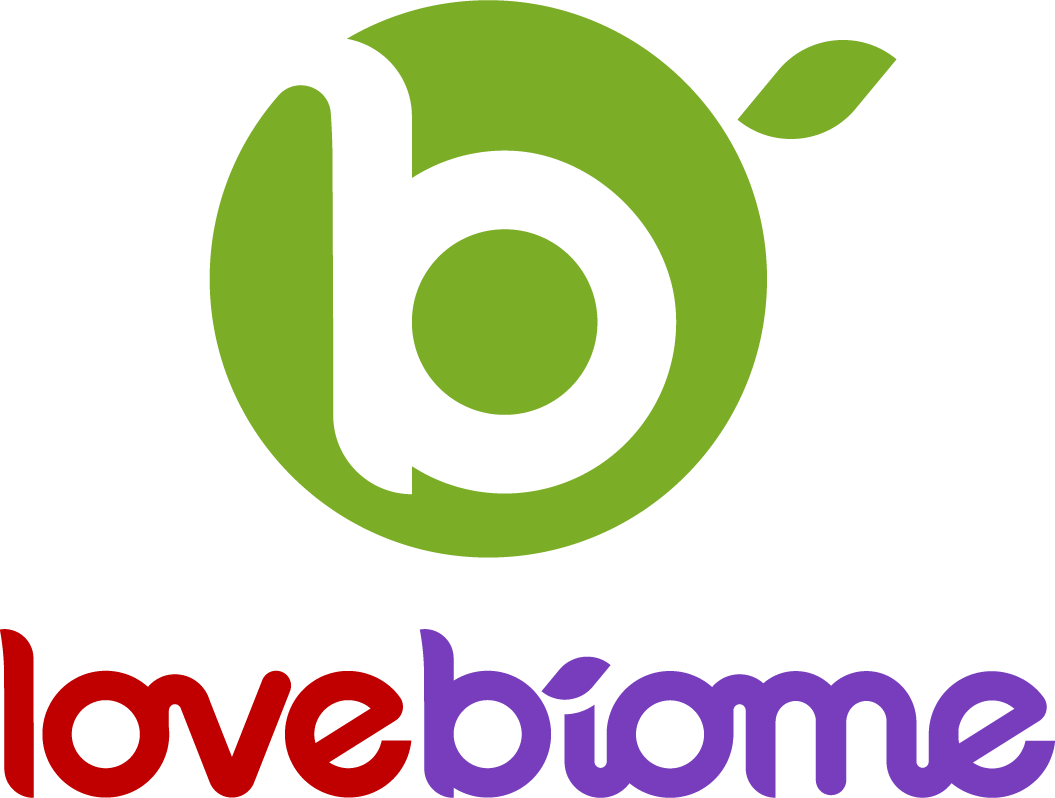Gut Microbiome Ecology
By: Zach Aanderud Ph.D.
This article describes the basic ecology of the gut microbiome. Highlights the three most substantial benefits of your gut microbiome including protection against brain-gut microbiome chemical
In each of our large intestines lives trillions of micro-organisms that collectively together create a supporting organ at the center of our health called the gut microbiome. Our gut houses the highest density of microorganisms, belonging predominantly to bacteria, but also fungi, archaea, and protists, of any biome or microbiome on Earth. Over 5,000 different species of microorganisms species weighing approximately 2 kilograms or 4.4 lbs.—almost twice as heavy as our brains—live inside our digestive tract (Bäckhed et al 2005; Sekirov et al 2009; Sender et al 2016). We are ourselves equal parts bacteria and human, with the cell number within our microbiome equal to our own cells.
Further, if we investigate the genes that are responsible for the activity, our gut microbiota may express ≥ 100 times more genes than our own genome with 3.3 million unique encoding genes compared with the 23,000 genes in our entire human genome (Amon and Sanderson 2017).
But before we focus on the many diverse and essential functions due to our gut microbiome genetic diversity, we need to discuss the ecology of our digestive tracts. At a basal level, our digestion occurs within an ecosystem where living (i.e., our gastrointestinal tract, gut microbiome) and non-living components (i.e., the food we eat) interact. Let’s break down each one of these components.

Gastrointestinal Tract
Although nutrient availability is highest proximal to sites of absorption, the stomach, and small intestine contain relatively small numbers of micro-organisms. Microbial numbers are restricted in these areas due to the low pH of the stomach contents, the microbial toxicity of bile salts, and the relatively swift flow of the digest. Upwards of 90% of digestion occurs in these sites with relatively high concentrations of oxygen (Rinninella et al 2019).
In contrast, the large intestine at the distal end of your gastrointestinal tract retains and continues to digest your food for six times longer than the small intestine and performs multiple other services for us in a low-oxygen environment. Within your intestine, your intestinal epithelium cells form a layer or luminal surface or lining of the gastrointestinal tract. This layer serves two main functions: absorbing useful substances into the body and restricting the entry of harmful substances or microorganisms. To perform these tasks appropriately, intestinal epithelium cells generate an intestinal mucosal barrier of intestinal mucosa between the body and the gut that prevents the uncontrolled translocation of luminal contents into the body properly and houses bacteria in the large intestine.
Gut Microbiome
Over 99% of our gut microbiome is housed in the large intestine with bacteria either being mucosa-associated bacteria that have a long-term impact on our immune and metabolic health due to the proximity to the epithelium (Juge 2022), or more transient free-living bacteria passing through our large intestines daily. The bacteria that occupy a niche in the mucosal layer are true residents of our large intestine while the free-living bacteria are just “hitchhiking” through our guts. In the large intestine colon, a low-oxygen environment, you will find anaerobic bacteria dominated by bacterial phyla the Bacillota (previously the Firmicutes), Bacteroidota, Actinomycetota, and Psuedomonadota (previously the Proteobacteria) and genera Bacteroides, Clostridium, Faecalibacterium, Eubacterium, Ruminococcus, Peptococcus, Peptostrptococcus, and Bifidobacterium (Rinninella et al 2019). Other genera such as Escherichia and Lactobacillus are present to a lesser extent.
Your Food
Ultimately, 60% of the dry mass of our feces are gut microbiome bacteria. The carbon and energy requirements of the enormous numbers of bacteria in our gut are met by several sources: complex dietary polyphenols, digestible fiber, other carbohydrates, proteins, and fats that have escaped digestion, components of host secretions (mucins), and sloughed epithelial cells. The astounding degree of bacterial diversity in the large intestine indicates a multitude of ecological niches that are created not only by our own physiology but also through the development of complex food webs where the byproducts of one bacteria may become the substrate for other bacteria (Walter 2008). Our diet determines the types of food that help diversify our microbiome.
The gut microbiome provides a plethora of essential health benefits, and this article will highlight three—boosting our immune system, generating vitamins/combating toxins, and generating neurotransmitters that impact our mental wellness.

Immune Boost
A healthy gut microbiome is a huge boost to your immune system, or the complex network of organs, cells, and proteins that defend our body against infection. The bacterial residents of our large intestines alter gut chemistry, fully occupy the space in the intestine, and secrete antimicrobial proteins excluding potential pathogens. The bacteria in our guts metabolize food through fermentation and generate short-chain fatty acids (SCFA) like acetic, butyric, and propionic acids. These SCFAs enhance the host antibacterial immune response by lowering gastric pH and inhibiting the growth of harmful pathogens like Clostridium difficile (Ouyang et al 2022). Clostridium difficile is an opportunistic diarrheal pathogen responsible for significant morbidity and mortality worldwide commonly induced by antibiotic treatments (Gregory et al 2021).
The foods that support increased levels of SCFA are dietary polyphenols, fructo-oligosaccharides, and indigestible carbohydrates and fibers such as inulin, resistant starches, gums, and pectins. Further, many resident and transient bacteria in our gut microbiomes produce small amounts of antibacterial molecules termed bacteriocins (e.g., microcins, enterocins, and staphylococcins) that have the capacity to eliminate specific colonizing pathogens (Heilbronner et al 2021). SCFA also helps maintain the integrity of the intestinal epithelium cells.
The imbalance of micro-organisms or the breakdown of the mucosal barrier increases the intestinal permeability of epithelium in a process referred to as dysbiosis. Unfortunately, gut dysbiosis exacerbates multiple autoimmune diseases including rheumatoid arthritis, multiple sclerosis, and celiac disease (Chang and Choi 2023; Chen and Vitetta 2021). A healthy gut microbiome dramatically helps maintain homeostasis in your body supporting a properly functioning immune system.
Vitamins and Toxins
Specific vitamins, essential for our health, are only generated in our gut microbiomes. Most vitamins must be provided exogenously from external sources. Vitamins are present in various foods, but that means deficiencies may occur due to poor diets.
Unexpectedly, our gut microbiome may synthesize vitamins de novo (from the beginning) especially upwards of 30% of vitamin K and vitamins in the B group such as riboflavin, niacin, and cobalamin (Nysten and Dijick 2023). Vitamin K is necessary for bone, cognitive, and heart health, and vitamin B groups are necessary to maintain overall good health, impacting energy levels, brain function, and cell metabolism.
Vitamins are essential for our health, but other chemical substances are extremely harmful to us. We are consistently bombarded with xenobiotics (i.e., chemical substances not normally present in the environment of living organisms) from anthropogenically generated pollution to food additives and pesticides. Without our gut microbiome metabolism, many xenobiotics would reach toxic concentrations (Croom 2012). Due to the genetic diversity, a healthy gut contains a powerful metabolizing capacity to biotransform a myriad of xenobiotics far exceeding our own metabolic potential (Dikeocha et al 2022; Abdelsalam et al 2020).
Gut-brain connection
Your brain and your gut microbiome are in a continuous conversation through millions of nerve cells. The gut-brain connection is the biochemical signaling that occurs between the bacteria living in your gastrointestinal tract and your central nervous system. The biochemical signals are initiated by neurotransmitters (Reynoso-Garcia et al 2022) like SCFAs (Obata and Pachnis 2016), 5-hydroxytryptamine (5-HT, serotonin), γ-aminobutyric acid (GABA; Pokusaeva et al 2017), and hormones such as cortisol (Valles-Colomer et al 2019). Together, the gut and the brain directly or indirectly influence emotion, cognition, and pathophysiology of brain disorders.
For example, 95% of our neurotransmitter serotonin is generated in our gut, which regulates emotion (i.e., mood, sleep, digestion, nausea, healing, bone health, blood clotting, and sexual desire; Terry and Margolis 2017). Other neuropsychiatric diseases like depressive disorders are also related to gut dysbiosis. Generally, a decrease in Bacillota bacteria accounts for a decline in SCFAs with depression, affecting the intestinal barrier (Huang et al 2018). Further, Bifidobacteria levels were also reduced in depression and the reintroduction of probiotic species like Bifidobacterium longum and Bifidobacterium breve reduced depressive behaviors and increased the secretion of 5-hydroxytryptophan and butyrate (Tian et al 2019).
Ultimately, when we have a gut feeling, butterflies in our stomach, or we trust our gut we are listening, in part, to the crosstalk between your gut microbiome and brain.
Together with our gut microbiomes, we form a “superorganism.” We are dependent on one another. With trillions of cells, thousands of different species, and relatively unlimited gene function, our gut microbiomes perform essential daily functions in our lives that we vastly underestimate. We need to appreciate and nurture our microbiomes so that we may fully benefit from our centers of health.

About the Author
Zach Aanderud holds a Ph.D. and is a professor of microbial ecology and biogeochemistry at Brigham Young University. He was born and raised in Portland, Oregon, and was educated at BYU, the University of California Davis, and Michigan State University.
References
Abdelsalam NA et al (2020) Toxicomicrobiomics: the human microbiome vs. pharmaceutical, dietary, and environmental xenobiotics. Front Pharmacol 11. DOI: 10.3389/fphar.2020.00390
Amon P and Sanderson I (2017) What is the microbiome. Arch Dis Child Educ Pract Ed 102:258-261. DOI: 10.1136/archdischild-2016-311643
Bäckhed F et al (2005) Host-bacterial mutualism in the human intestine. Science 307: 1915-20. DOI: 10.1126/science.1104816
Chang S and Choi Y (2023) Gut dysbiosis in autoimmune diseases: association with mortality. Front Cell Infect Microbiol 31. DOI: 10.3389/fcimb.2023.1157918
Chen J and Vitetta L (2021) Intestinal dysbiosis in celiac disease: decreased buyturate production may facilitate the onset of the disease. PNAS 118: 41 e2113655118. DOI: 10.1073/pnas.2113655118
Croom E (2012) Metabolism of xenobiotics of human environments. Prog Mol Biol Transl Sci 112: 31-88. DOI: 10.1016/B978-0-12-415813-9.00003-9
Dikeocha IJ et al (2022) Pharmacomicrobiomics: influence of gut microbiota on drug and xenobiotic metabolism. FASEB 36:6. DOI: 10.1096/fj.202101986R
Gregory AL, Pensinger DA, Hryckowian AJ (2021) A short chain fatty acid-centric view of Clostridioides difficile pathogenesis. PLoS Pathog 17: 10 e1009959. DOI 10.1371/journal.ppat.1009959
Heilbronner S et al (2021) The microbiome-shaping roles of bacteriocins. Nature Reviews Microbiology 19: 726-739. DOI: 10.1038/s41579-021-00569-w
Huang Y et al (2018). Possible association of Firmicutes in the gut microbiota of patients with major depressive disorder. Neuropsychiatr Dis Treat 14: 3329–3337. DOI: 10.2147/NDT.S188340
Juge N (2022) Relationship between mucosa-associated gut microbiota and human disease. Biochem Soc Trans 50(5): 1225–1236. DOI: 10.1042/BST20201201
Knudsen JK et al (2021) Fecal microbiota transplantation from patients with depression or healthy individuals into rats modulates mood-related behavior. Sci Rep 11: 21869. DOI: 10.1038/s41598-021-01248-9
LeBlanc et al (2013) Bacteria as vitamin suppliers to their host: a gut microbiota perspective. Current Opinion Biotech 24: 2. DOI: 10.1016/j.copbio.2012.08.005
Obata Y and Pachnis V (2016) The effect of microbiota and the immune system on the development and organization of the enteric nervous system. Gastroenterology 151: 836–844. DOI: 10.1053/j.gastro.2016.07.044
Ouyang Z et al (2021) The role of short-chain fatty acids in Clostridioides difficie infection: A review. Anaerobe 75: 102585 DOI: 10.1016/j.anaerobe.2022.102585
Pokusaeva K, et al (2017). GABA-producing Bifidobacterium dentium modulates visceral sensitivity in the intestine. Neurogastroenterol Motil 29: e12904. DOI: 10.1111/nmo.12904
Reynoso-Garcia et al (2022) A complete guide to human microbiomes: Body niches, transmission, development, dysbiosis, and restoration. Front Syst Biol 2. DOI: 10.3389/fsysb.2022.951403
Rinninella E et al (2019). What is the healthy gut microbiota composition? A changing ecosystem across age, environment, diet, and diseases. Microorganisms 7: E14. DOI: 10.3390/microorganisms7010014
Savage DC (1977) Microbial ecology of the gastrointestinal tract. Annu Rev Microbiol 31:107-33. DOI: 10.1146/annurev.mi.31.100177.000543
Sekirov I, Russell SL, Antunes LC, Finlay BB (2019) Gut microbiota in health and disease. Physiol. Rev. 90:859–904. DOI: 10.1152/physrev.00045.2009.
Sender et al (2016) Revised Estimates for the Number of Human and Bacteria Cells in the Body. PLOS Biol 14:e1002533. DOI: 10.1371/journal.pbio.1002533
Valles-Colomer, M., Falony, G., Darzi, Y., Tigchelaar, E. F., Wang, J., Tito, R. Y., et al. (2019). The neuroactive potential of the human gut microbiota in quality of life and depression. Nat. Microbiol. 4, 623–632. doi:10.1038/s41564-018-0337-x
Terry N and Margolis KG (2017) Serotonergic Mechanisms Regulating the GI Tract: Experimental Evidence and Therapeutic Relevance. Handb Exp Pharmacol 239: 319-342. DOI: 10.1007/164_2016_103
Tian P et al (2019) Ingestion of Bifidobacterium longum subspecies infantis strain CCFM687 regulated emotional behavior and the central BDNF pathway in chronic stress-induced depressive mice through reshaping the gut microbiota. Food Funct 10: 7588–7598. DOI: 10.1039/c9fo01630a






